Jiayu Liu
Pruning Long Chain-of-Thought of Large Reasoning Models via Small-Scale Preference Optimization
Aug 13, 2025Abstract:Recent advances in Large Reasoning Models (LRMs) have demonstrated strong performance on complex tasks through long Chain-of-Thought (CoT) reasoning. However, their lengthy outputs increase computational costs and may lead to overthinking, raising challenges in balancing reasoning effectiveness and efficiency. Current methods for efficient reasoning often compromise reasoning quality or require extensive resources. This paper investigates efficient methods to reduce the generation length of LRMs. We analyze generation path distributions and filter generated trajectories through difficulty estimation. Subsequently, we analyze the convergence behaviors of the objectives of various preference optimization methods under a Bradley-Terry loss based framework. Based on the analysis, we propose Length Controlled Preference Optimization (LCPO) that directly balances the implicit reward related to NLL loss. LCPO can effectively learn length preference with limited data and training. Extensive experiments demonstrate that our approach significantly reduces the average output length by over 50\% across multiple benchmarks while maintaining the reasoning performance. Our work highlights the potential for computationally efficient approaches in guiding LRMs toward efficient reasoning.
Prospect Theory Fails for LLMs: Revealing Instability of Decision-Making under Epistemic Uncertainty
Aug 12, 2025
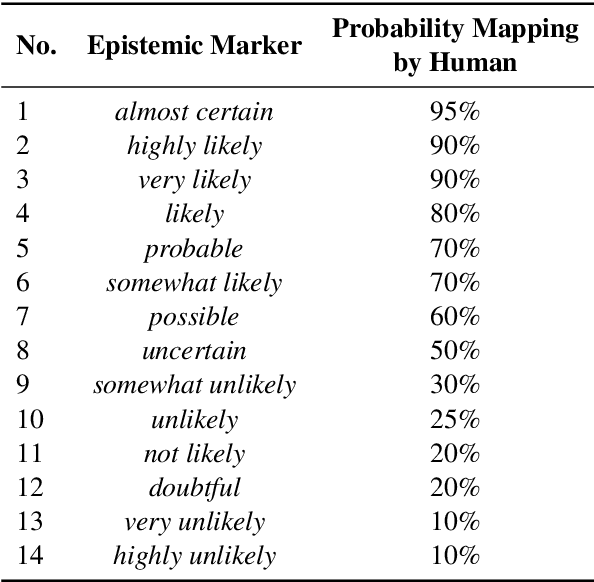

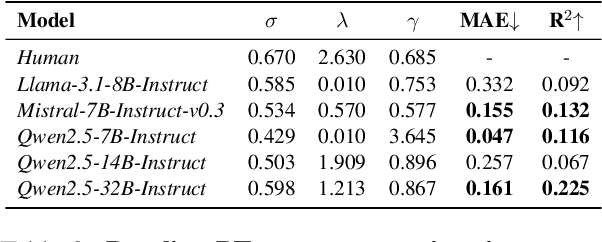
Abstract:Prospect Theory (PT) models human decision-making under uncertainty, while epistemic markers (e.g., maybe) serve to express uncertainty in language. However, it remains largely unexplored whether Prospect Theory applies to contemporary Large Language Models and whether epistemic markers, which express human uncertainty, affect their decision-making behaviour. To address these research gaps, we design a three-stage experiment based on economic questionnaires. We propose a more general and precise evaluation framework to model LLMs' decision-making behaviour under PT, introducing uncertainty through the empirical probability values associated with commonly used epistemic markers in comparable contexts. We then incorporate epistemic markers into the evaluation framework based on their corresponding probability values to examine their influence on LLM decision-making behaviours. Our findings suggest that modelling LLMs' decision-making with PT is not consistently reliable, particularly when uncertainty is expressed in diverse linguistic forms. Our code is released in https://github.com/HKUST-KnowComp/MarPT.
Diversity-Enhanced Reasoning for Subjective Questions
Jul 27, 2025Abstract:Large reasoning models (LRM) with long chain-of-thought (CoT) capabilities have shown strong performance on objective tasks, such as math reasoning and coding. However, their effectiveness on subjective questions that may have different responses from different perspectives is still limited by a tendency towards homogeneous reasoning, introduced by the reliance on a single ground truth in supervised fine-tuning and verifiable reward in reinforcement learning. Motivated by the finding that increasing role perspectives consistently improves performance, we propose MultiRole-R1, a diversity-enhanced framework with multiple role perspectives, to improve the accuracy and diversity in subjective reasoning tasks. MultiRole-R1 features an unsupervised data construction pipeline that generates reasoning chains that incorporate diverse role perspectives. We further employ reinforcement learning via Group Relative Policy Optimization (GRPO) with reward shaping, by taking diversity as a reward signal in addition to the verifiable reward. With specially designed reward functions, we successfully promote perspective diversity and lexical diversity, uncovering a positive relation between reasoning diversity and accuracy. Our experiment on six benchmarks demonstrates MultiRole-R1's effectiveness and generalizability in enhancing both subjective and objective reasoning, showcasing the potential of diversity-enhanced training in LRMs.
CogMath: Assessing LLMs' Authentic Mathematical Ability from a Human Cognitive Perspective
Jun 04, 2025Abstract:Although large language models (LLMs) show promise in solving complex mathematical tasks, existing evaluation paradigms rely solely on a coarse measure of overall answer accuracy, which are insufficient for assessing their authentic capabilities. In this paper, we propose \textbf{CogMath}, which comprehensively assesses LLMs' mathematical abilities through the lens of human cognition. Specifically, inspired by psychological theories, CogMath formalizes human reasoning process into 3 stages: \emph{problem comprehension}, \emph{problem solving}, and \emph{solution summarization}. Within these stages, we investigate perspectives such as numerical calculation, knowledge, and counterfactuals, and design a total of 9 fine-grained evaluation dimensions. In each dimension, we develop an ``\emph{Inquiry}-\emph{Judge}-\emph{Reference}'' multi-agent system to generate inquiries that assess LLMs' mastery from this dimension. An LLM is considered to truly master a problem only when excelling in all inquiries from the 9 dimensions. By applying CogMath on three benchmarks, we reveal that the mathematical capabilities of 7 mainstream LLMs are overestimated by 30\%-40\%. Moreover, we locate their strengths and weaknesses across specific stages/dimensions, offering in-depth insights to further enhance their reasoning abilities.
Revisiting Epistemic Markers in Confidence Estimation: Can Markers Accurately Reflect Large Language Models' Uncertainty?
May 30, 2025



Abstract:As large language models (LLMs) are increasingly used in high-stakes domains, accurately assessing their confidence is crucial. Humans typically express confidence through epistemic markers (e.g., "fairly confident") instead of numerical values. However, it remains unclear whether LLMs consistently use these markers to reflect their intrinsic confidence due to the difficulty of quantifying uncertainty associated with various markers. To address this gap, we first define marker confidence as the observed accuracy when a model employs an epistemic marker. We evaluate its stability across multiple question-answering datasets in both in-distribution and out-of-distribution settings for open-source and proprietary LLMs. Our results show that while markers generalize well within the same distribution, their confidence is inconsistent in out-of-distribution scenarios. These findings raise significant concerns about the reliability of epistemic markers for confidence estimation, underscoring the need for improved alignment between marker based confidence and actual model uncertainty. Our code is available at https://github.com/HKUST-KnowComp/MarCon.
What Makes In-context Learning Effective for Mathematical Reasoning: A Theoretical Analysis
Dec 11, 2024Abstract:Owing to the capability of in-context learning, large language models (LLMs) have shown impressive performance across diverse mathematical reasoning benchmarks. However, we find that few-shot demonstrations can sometimes bring negative performance and their effectiveness on LLMs' reasoning abilities remains unreliable. To this end, in this paper, we aim to theoretically analyze the impact of in-context demonstrations on LLMs' reasoning performance. We prove that the reasoning efficacy (measured by empirical prediction loss) can be bounded by a LLM-oriented semantic similarity and an inference stability of demonstrations, which is general for both one-shot and few-shot scenarios. Based on this finding, we propose a straightforward, generalizable, and low-complexity demonstration selection method named LMS3. It can adaptively facilitate to select the most pertinent samples for different LLMs and includes a novel demonstration rejection mechanism to automatically filter out samples that are unsuitable for few-shot learning. Through experiments on three representative benchmarks, two LLM backbones, and multiple few-shot settings, we verify that our LMS3 has superiority and achieves consistent improvements on all datasets, which existing methods have been unable to accomplish.
FedDW: Distilling Weights through Consistency Optimization in Heterogeneous Federated Learning
Dec 05, 2024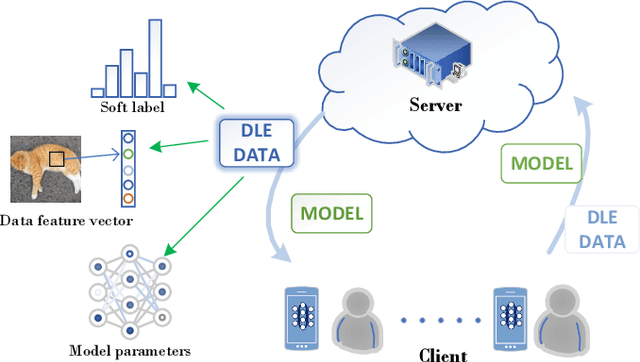
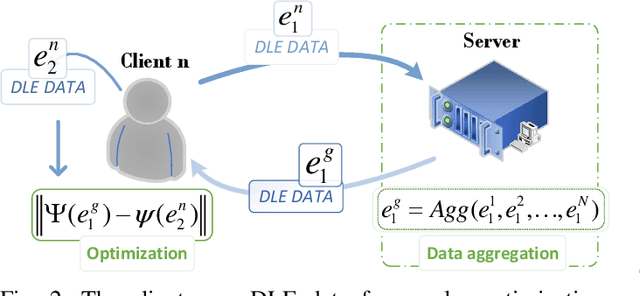
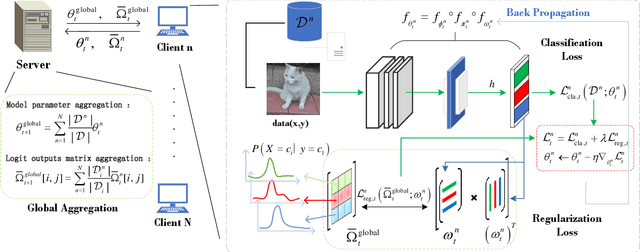

Abstract:Federated Learning (FL) is an innovative distributed machine learning paradigm that enables neural network training across devices without centralizing data. While this addresses issues of information sharing and data privacy, challenges arise from data heterogeneity across clients and increasing network scale, leading to impacts on model performance and training efficiency. Previous research shows that in IID environments, the parameter structure of the model is expected to adhere to certain specific consistency principles. Thus, identifying and regularizing these consistencies can mitigate issues from heterogeneous data. We found that both soft labels derived from knowledge distillation and the classifier head parameter matrix, when multiplied by their own transpose, capture the intrinsic relationships between data classes. These shared relationships suggest inherent consistency. Therefore, the work in this paper identifies the consistency between the two and leverages it to regulate training, underpinning our proposed FedDW framework. Experimental results show FedDW outperforms 10 state-of-the-art FL methods, improving accuracy by an average of 3% in highly heterogeneous settings. Additionally, we provide a theoretical proof that FedDW offers higher efficiency, with the additional computational load from backpropagation being negligible. The code is available at https://github.com/liuvvvvv1/FedDW.
Locating the Leading Edge of Cultural Change
Nov 22, 2024Abstract:Measures of textual similarity and divergence are increasingly used to study cultural change. But which measures align, in practice, with social evidence about change? We apply three different representations of text (topic models, document embeddings, and word-level perplexity) to three different corpora (literary studies, economics, and fiction). In every case, works by highly-cited authors and younger authors are textually ahead of the curve. We don't find clear evidence that one representation of text is to be preferred over the others. But alignment with social evidence is strongest when texts are represented through the top quartile of passages, suggesting that a text's impact may depend more on its most forward-looking moments than on sustaining a high level of innovation throughout.
Real or Robotic? Assessing Whether LLMs Accurately Simulate Qualities of Human Responses in Dialogue
Sep 16, 2024Abstract:Studying and building datasets for dialogue tasks is both expensive and time-consuming due to the need to recruit, train, and collect data from study participants. In response, much recent work has sought to use large language models (LLMs) to simulate both human-human and human-LLM interactions, as they have been shown to generate convincingly human-like text in many settings. However, to what extent do LLM-based simulations \textit{actually} reflect human dialogues? In this work, we answer this question by generating a large-scale dataset of 100,000 paired LLM-LLM and human-LLM dialogues from the WildChat dataset and quantifying how well the LLM simulations align with their human counterparts. Overall, we find relatively low alignment between simulations and human interactions, demonstrating a systematic divergence along the multiple textual properties, including style and content. Further, in comparisons of English, Chinese, and Russian dialogues, we find that models perform similarly. Our results suggest that LLMs generally perform better when the human themself writes in a way that is more similar to the LLM's own style.
Uni-3DAD: GAN-Inversion Aided Universal 3D Anomaly Detection on Model-free Products
Aug 29, 2024



Abstract:Anomaly detection is a long-standing challenge in manufacturing systems. Traditionally, anomaly detection has relied on human inspectors. However, 3D point clouds have gained attention due to their robustness to environmental factors and their ability to represent geometric data. Existing 3D anomaly detection methods generally fall into two categories. One compares scanned 3D point clouds with design files, assuming these files are always available. However, such assumptions are often violated in many real-world applications where model-free products exist, such as fresh produce (i.e., ``Cookie", ``Potato", etc.), dentures, bone, etc. The other category compares patches of scanned 3D point clouds with a library of normal patches named memory bank. However, those methods usually fail to detect incomplete shapes, which is a fairly common defect type (i.e., missing pieces of different products). The main challenge is that missing areas in 3D point clouds represent the absence of scanned points. This makes it infeasible to compare the missing region with existing point cloud patches in the memory bank. To address these two challenges, we proposed a unified, unsupervised 3D anomaly detection framework capable of identifying all types of defects on model-free products. Our method integrates two detection modules: a feature-based detection module and a reconstruction-based detection module. Feature-based detection covers geometric defects, such as dents, holes, and cracks, while the reconstruction-based method detects missing regions. Additionally, we employ a One-class Support Vector Machine (OCSVM) to fuse the detection results from both modules. The results demonstrate that (1) our proposed method outperforms the state-of-the-art methods in identifying incomplete shapes and (2) it still maintains comparable performance with the SOTA methods in detecting all other types of anomalies.
 Add to Chrome
Add to Chrome Add to Firefox
Add to Firefox Add to Edge
Add to Edge